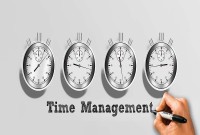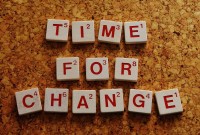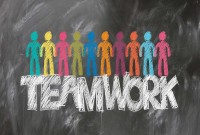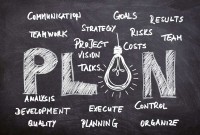- Home
- Business Processes
- Industry Knowledge
- Aerospace Industry
- Automotive Industry
- Banking Domain
- BFSI Industry
- Consumer/ FMCG Industry
- Chemicals Industry
- Engineering & Construction
- Energy Industry
- Education Domain
- Finance Domain
- Hospitality Domain
- Healthcare Industry
- Insurance Domain
- Retail Industry
- Travel and Tourism Domain
- Telecom Industry
- Leadership Skills
- eLearning
- Home
- Leadership
- Time Management
- Kolb Learning Cycle & Change
Kolb Learning Cycle & Change
David Kolb produced this popular model for learning in 1984. The model suggests four stages of learning which most learners go through in order to learn effectively. Leaming is itself a process of change. Something is added to our perception and prepared us for the next impression, which will change our understanding yet more, however minutely. The Kolb contribution is a significant one because it practically equates change and learning.
Kolb’s Model of Experiential Learning
David Kolb's from Western Reserve University in Cleveland, Ohio gave the model of "experiential learning" which states that humans learn continually, and, in the process, build particular strengths. He says that learning is all about having experiences and then reflects upon the experience that we have just had. We draw out some concepts and some principles from this reflection and test out the new concepts in new situations so that they become part of the ongoing experience. He described it in terms of four learning styles: Accommodating, Converging, Diverging, and Assimilating.
Kolb’s Living Experience
Kold is also a supporter of the theme of human becoming and what they become. He uses the word 'learning', and all these ideas come together and form a framework within which we can think about change and even learn to love it and welcome it. Laming is itself a process of change. Something is added to our perception and prepared us for the next impression, which will change our understanding yet more, however minutely.
What David Kolb is talking about is the normal scientific approach, where observations made are the normal scientific approach, where observations are made and reflected upon to yield theories from which hypotheses are derived and tested out in action, creating new events and experiences.
The first stage is concrete learning or concrete experience, where the learner encounters a new experience or reinterprets an existing experience. This could be where the learner is exposed to a new task or a new way of carrying out a project. This is followed by reflective observation, where the learner reflects on the experience on a personal basis. Following reflective observation is abstract conceptualization, where learners form new ideas or modify current abstract ideas, based on the reflections that arise from the reflective observation stage. The last stage is where the learner applies the new ideas to her surroundings to see if there are any modifications in the next appearance of the experience. By actively experimenting learns to associate what we have experienced with new ideas and innovations.
Change is learning
When you learn, you change. When you change, you learn. The Kolb contribution is a significant one because it practically equates change and learning. A book on change is therefore also a book about learning. Reginald Revans (1907–2003), a UK scientist and educational innovator who gave the “Action Laming framework” made a distinction with two little symbols L>C and C>L. If learning is represented by L and change represented by C then the first symbol means you are ahead in the game you are learning faster than things change. The second can spell disaster because things are changing faster than you are learning so that you are behind in the race. His contribution to our understanding of change management processes gives a central place to learning, both personal and institutional. Revans’ approach emphasizes the practical and moral significance of personal involvement in action and learning, as a means of resolving the intractable social and organizational problems that we find around us.
Revans is in harmony with Kolb in that his contribution of Action Learning is based on the concept that people learn more from reflection, discussion, and working together on real-life issues than from being lectured at. They learn from each other and the learning is relevant, and even when the classroom is being used for input, it is important to provide plenty of scope for learning in this way.
For a change initiative to succeed, project managers must effectively support those affected by the change during the project. Those grappling with the effects of change might need the training to tackle it effectively and we can use this framework to train people with different learning styles; to plan change communications; and to deal with team members who lack motivation; and more.
These perceptions of what is to be human can help us to take a positive approach to change and make it work to our advantage and to that of our enterprise. You are only really alive when you are changing. It is the essence of personal growth, it is the basis of relationships with other people, and without it, there is no learning and no progress.
Related Links
You May Also Like
-
A good leadership style is something that every effective leader must have in order to succeed, but identifying what that entails or does not entails might be difficult to understand. Most of the research on leadership focuses on the exemplary, best practices, and positive attributes of effective and successful leaders. This article talks about a new approach to learn leadership using lessons from bad leadership. That is the lessons to be learned by examining leaders who have not effectively exercised their power, authority, or influence.
-
Time management is the process of planning and exercising conscious control of time spent on specific activities, especially to increase effectiveness, efficiency, and productivity. The best time management techniques improve the ways you work. Time management refers to managing time effectively so that the right time is allocated to the right activity. Learn more about the five steps for effective time management viz. study, identify, analyze, decide, and implement.
-
Evidence of the medically damaging symptoms of work stress necessitates applying the treatment of stress management. Stress management is increasingly drawing the attention to the management experts not only as a remedial measure but also as a way to resource management. If the workplace can be made a little more lovable the increase in the achievement of the organization may be much time more. If group stress can be removed by introducing group discussions and recreational facilities a long-lasting team spirit may get developed.
-
In our present Hitech scenario, society is changing very fast. What are the skills that are most relevant for leaders in relation to the changing economic environment? Leaders need to develop skills to drive innovation and change in order to play a more central role in their organizations’ activities. How do managers accept the change and meet business expectations by becoming a key figure in driving change and innovation?
-
Teams are part of the modern organizational culture. Whether you are a team leader or a team member, having a better understanding of how teams work, and being able to identify where the team is in the process, is a critical part of ensuring the team is ultimately successful. Start with the basics and understand what a team is and what role they play in an organization.
-
Concept & Definition of Stress
Stress is a popular expression used by people in day to day life. Pressures of day to day living sometimes necessitate coping or dealing with them and stretch the body beyond its natural capacity. They are called stressors. Stress is a natural, ongoing dynamic, and interactive process that takes place as people adjust to their environment.
-
Reasons behind Wastage of Time
Under-utilization of time may be due to the faulty system or faults of manager/officer/leader or due to lack of planning. There could be many factors driving the procrastination behavior like system issues, personal work habits, and lack of delegation, personality traits, and bad working habits of the leader, failure to tackle interpersonal conflicts, obstacles, and lack of far-sightedness.
-
Tools for Developing Your Team
If a manager has too many weak spots in the talent of the team, the ability to empower the team members to independently execute the project is impaired. Assignments fall behind schedule or stretch out because the needed skills or knowledge are not in place when needed. To successfully execute important projects, hiring talented people, and increasing the talents of existing staff are most important.
-
Four main areas in an organization that need special focus when we discuss the change in an organizational setup are organizational structure, technology, work environment, and the people. Some people call it a process, system, and people. Change in an organization includes adapting to change, controlling change, and effecting change.
-
Productivity is defined not in terms of the number of goods produced, but in terms of value-added per employee. Customers don’t really buy goods and services but in fact, they buy a value - something they value. The future is all about tangible products fulfilling intangible needs. Ideas like this can transform a business and provide them a competitive advantage to thrive in the future.
Explore Our Free Training Articles or
Sign Up to Start With Our eLearning Courses

About Us
Learning
© 2023 TechnoFunc, All Rights Reserved










